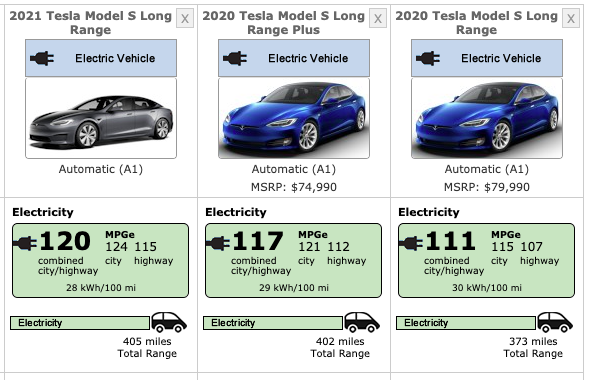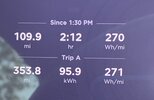Tesla continues to erode range anxiety from consumers considering electric vehicles. The company’s 2021 Tesla Model S Long Range Plus has received a rating of 405 miles of range from the U.S. Environmental Protection Agency.
The vehicle also earned a combined city/highway MPGe of 120.

The figures are are an improvement over the 2020 Tesla Model S Long Range Plus, which had an EPA rating of 402 miles of range and 117 MPGe, as well as the 2020 Tesla Model S Long Range that was rated at 373 miles of range and 111 MPGe.
Tesla lists its performance “Plaid” version of the Model S at an estimated 390 miles of range, however, it has yet to receive an official rating from the EPA.
In the past, Tesla has unlocked additional range in vehicles via software updates. It will be interesting to see if the company will continue to improve those already impressive range figures over time.
Last edited by a moderator:



